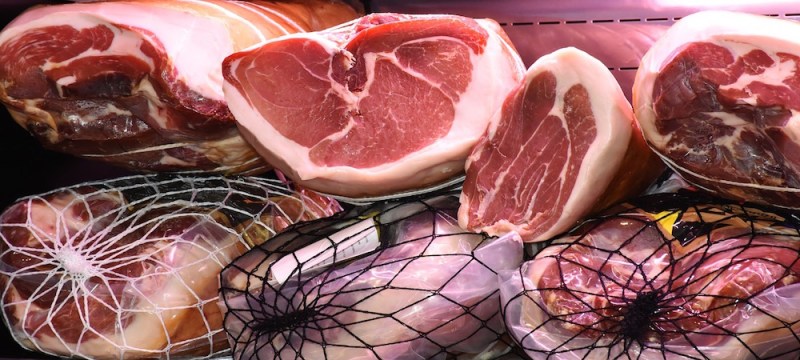Curing meat is the process of drying out meat and preserving it for future use while enhancing the flavor. There are two primary methods for curing meat — dry and wet. Wet curing is generally easier for inexperienced cooks because dry curing requires checking the humidity and careful monitoring to make sure bacteria doesn’t grow. Check out how to do both of these methods below:
Dry-Curing Method

Dry curing relies on salt, which preserves the meat and prevents bacteria from growing while it cures.
What You Need For A Dry Cure:
- Your choice of meat (pork and beef loins are recommended)
- Curing salt (regular salt will dry out the meat while curing salts will preserve the meat and prevent harmful bacteria from growing)
- Cheesecloth
- A meat prong
- Paper towels
How To Dry Cure:
- Place the meat in a large bowl and add the curing salt. You want to cover the entire piece of meat in the salt. If you have an especially large cut of meat, use the prong to poke holes into the meat so that the salt can be further submerged and improve the curing.
- Wrap the meat in plastic wrap and place it in the fridge for seven to 10 days.
- After taking the meat out of the fridge, thoroughly wash off the salt and let it air dry for a short period of time. Using paper towels, dab the meat to ensure it’s completely dry.
- Wrap the meat in cheesecloth to ensure no moisture sneaks in while the meat is curing.
- Hang the meat in a cool space (between 32 and 40 degrees Fahrenheit, or standard fridge temperatures). If you have a cellar that reaches these temperatures, hang the meat in the cellar. The humidity provided in cellars is higher than in a fridge, leaving you with a tastier finished product.
- Letting the meat cure for one month is ideal, but it can hang from anywhere between two weeks and three months.
If at any point during the curing process you notice that the meat has a nasty or unusual smell to it, throw it out — this means that the salt wasn’t properly applied and the meat has begun to rot. It’s better to play it safe so as not to contract foodborne illnesses.
Additional Seasonings

Applying herbs or spices to cured meat enhances the taste. However, you don’t want to overseason because the meat’s flavor will be diluted. You can add the seasonings with the curing salt or add them after rinsing the salt off the meat. Common seasonings for cured meats include black and pink peppercorns, demerara sugar, fennel, coriander and mustard seeds, rosemary, thyme and sage.
Wet-Curing Method
Wet-curing is a quicker way to cure meat that’s easy for beginners and provides powerful flavor. You simply submerge the meat in water and add your seasonings and cures to create a brine. It also prevents bacteria from growing and brings out more flavor in the meat.

What You Need For A Wet Cure:
- Your choice of meat (pork and beef loins recommended)
- Curing salt
- Water
- Resealable bags
How To Wet Cure:
- Place the meat in a resealable bag and completely submerge it in water. This is necessary to prevent any bacteria from growing and ensure the meat is properly cured.
- Add your curing salt and any other desired seasonings to the brine.
- Remove as much air from the bag as possible, seal it and place it in the fridge.
- Leave the meat in the bag for at least three days, rotating it and stirring the water every 24 hours. If you plan to cure the meat for longer than seven days, change the brine completely.
- When you’re done curing, remove the meat from the bag and rinse thoroughly under cold water. Place the meat on a rack to drain excess water and let it sit in the fridge for 24 hours.
After it sits, the meat is ready to eat. Meat that has been wet-cured can stay in the fridge for 30 days without worry of bacteria growing.
